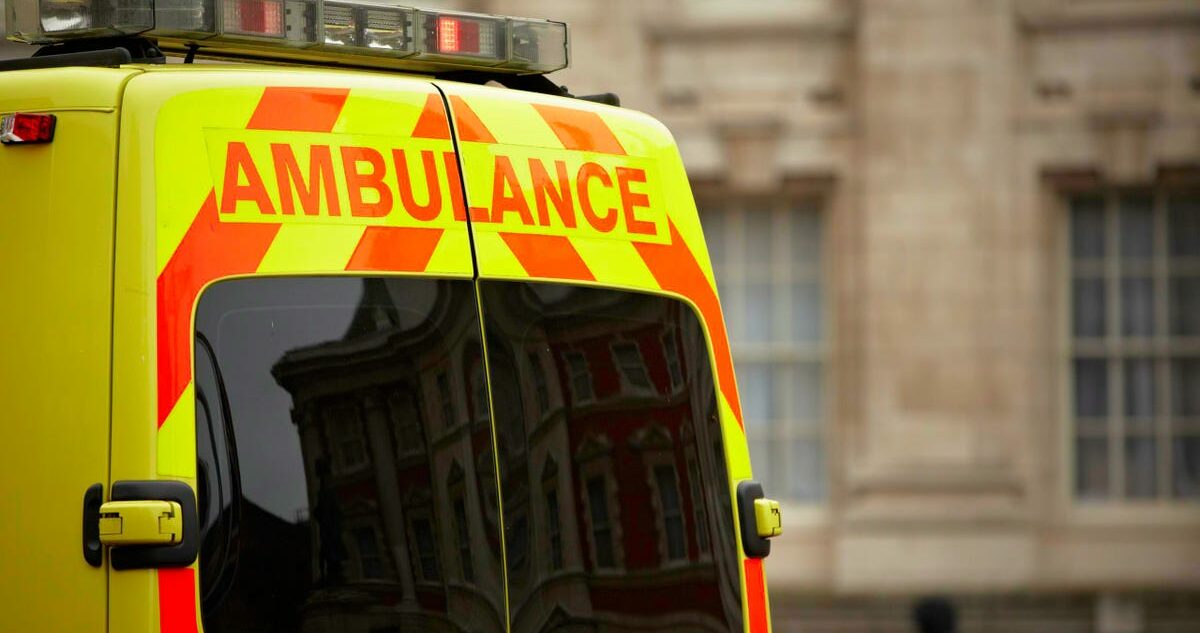Door of an emergency ambulance.
The English healthcare system faces significant challenges in emergency and emergency services, cancer care, diagnostics and planned care as demand continues to outstrip capacity.
The latest performance statistics from the National Health Service show the country’s elective backlog remains stable but high, while ambulance response times and emergency room waits are well below target levels.
Although private hospital care is available in England, the vast majority of planned and unplanned care is provided by the NHS, which is publicly funded and offers almost all services free of charge at the point of use.
NHS performance standards had fallen before the pandemic, with patients waiting for more than 4.4 million elective procedures like hip replacements and cataract surgeries in February 2020. Statistics released Thursday show that number has been hovering around the 7 million mark since August 2022.
This performance standard, published two months late, could well be impacted by two major strikes by junior doctors in March and April: an action that has already seen hundreds of thousands of appointments postponed.
But Covid-19, which has caused widespread cancellations and delays for the past three years, is a far bigger factor than strikes in the elective backlog. Not only has the pandemic seen the waiting list grow dramatically, it has contributed to a dramatic increase in the time patients wait for care.
In February 2020, the median wait time for an elective procedure was 7.5 weeks. In February, that number reached 14.5 weeks.
But hospitals have been able to reduce the number of patients waiting for care for incredibly long periods of time – more than two years or eighteen months, for example. Although a national server elimination target of 78 weeks was recently missed, there has nevertheless been significant improvement in this area.
This is really important both for the patients themselves and for the hospitals that will end up caring for them. For many patients, the longer they wait for care, the worse their condition tends to get when they go to hospital. This means that many patients are arriving at hospitals – whether for planned, urgent or other care – with more acute and complex needs than they might have had before the pandemic.
Emergency care in crisis, but cancer is improving
Other metrics released on Thursday show how widespread NHS performance problems have become. For many months, emergency care statistics, such as ambulance response times and emergency room wait times, have been very poor, as hospitals have struggled to free up beds for new patients.
Waits of 12 hours or more in emergency rooms have become such a problem that the NHS has now started sharing how often it happens. In February, of 1.19 million emergency room visits, 11% waited 12 hours or more after arriving at the emergency room.
Difficulties in getting patients out, hampered by factors such as a lack of adequate social care, is a major driver of these ambulance and emergency outcomes, which consistently cause serious harm to patients across the country.
Cancer diagnostics and care also struggle to meet several performance targets. But hospitals are managing to perform far more activities in both areas than before the pandemic, and several metrics are improving.
Staff fighting against “moral prejudice”
Staff well-being is a major concern for care providers, with anxiety and depression being the main drivers of absence.
A recent report by the Health and Safety Investigations Branch found that ambulance staff experienced ‘extreme emotion’ when discussing their work, with ‘moral injury’ – where staff feel unable to provide adequate care for patients in need – a recurring problem in emergency care .
Experts have long argued that the now widespread performance problems in the NHS reflect a lack of investment in fundamental areas such as the workforce, hospital equipment and social care services that can relieve pressure on health workers. acute services. Some of those problems have been exacerbated by the pandemic, two major think tanks concluded in a report released last year. Brexit, which disrupted the flow of specialist doctors from the EU, may well have made the situation worse.
Other long-standing concerns, such as the country’s aging population and the inadequate condition of many hospital complexes, have persisted and even worsened over the same period.
“Severe and unbearable pressure”
Reflecting on the latest NHS performance measures, Miriam Deakin, director of policy and strategy at industry body NHS Providers, said: “[These] figures show the NHS is under severe and unsustainable pressure.
“Trusted leaders and their staff have made remarkable progress in reducing the number of people waiting the longest for elective treatment, which is no small feat given the record number of vacancies, recent seasonal challenges and ongoing strikes.
“However, persistent challenges in emergency care are hampering progress on ambulance response times and A&E expectations.”
Deakin said patient flow “throughout the system, including mental health and community services” was struggling as demand exceeded capacity and waiting lists grew.
National workforce planning and investment is needed to shore up performance, she said, along with action to help resolve strikes.
“It is clear that the ongoing strikes are compounding pre-existing pressures, impacting patient care and impeding progress on care backlogs amid plummeting workforce morale,” a- she said in a statement encouraging the government to use an intermediary body to facilitate meaningful negotiations.
“We are at a critical moment. The two parties to the current wage dispute – the government and the unions – must urgently open talks in good faith. »



